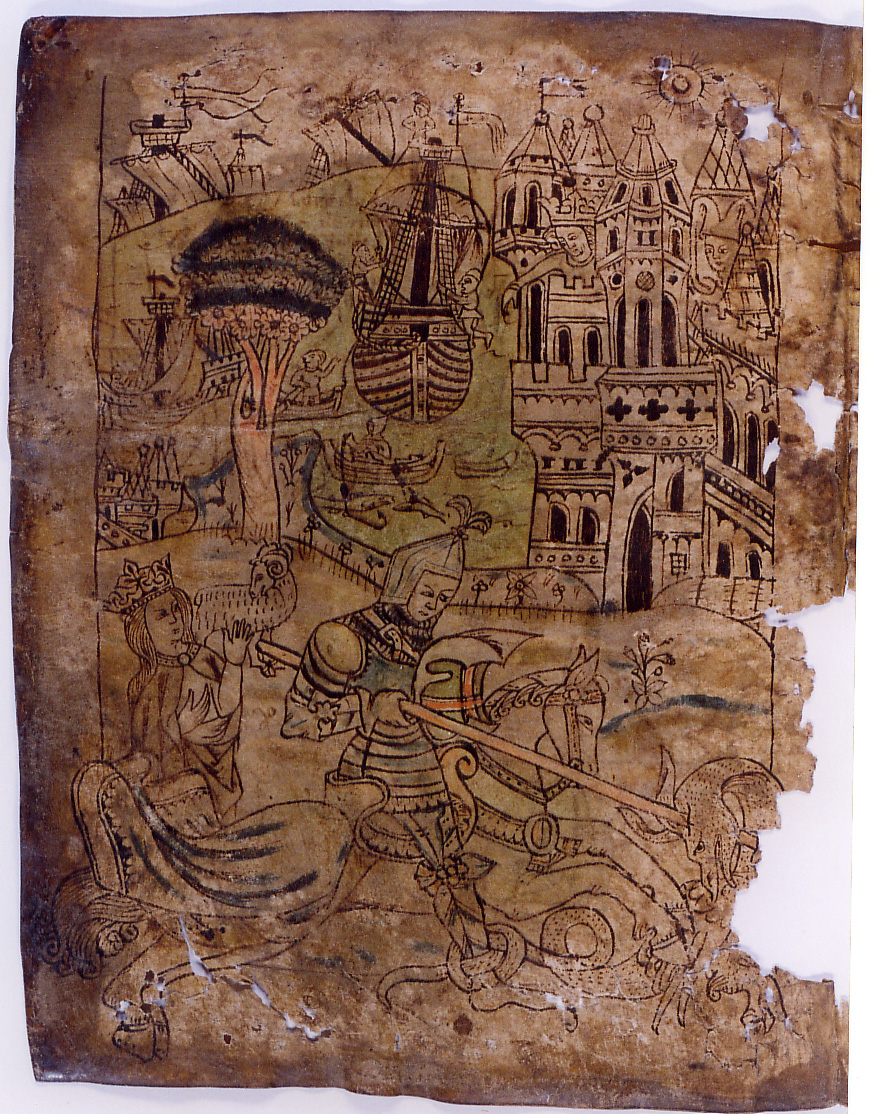TeiknibГіk on:
[Wikipedia]
[Google]
[Amazon]
 ''TeiknibГіk'' (
''TeiknibГіk'' (
 ''TeiknibГіk'' (
''TeiknibГіk'' (ReykjavГk
ReykjavГk ( ; ) is the capital and largest city of Iceland. It is located in southwestern Iceland, on the southern shore of FaxaflГіi bay. Its latitude is 64В°08' N, making it the world's northernmost capital of a sovereign state. With a po ...
, Stofnun ГЃrna MagnГєssonar, AM 673 a III 4to) is an Icelandic manuscript of drawings used as models for manuscript illumination, painting, carving and metalwork. It is remarkable for being one of only three dozen books of its type which survive from Western Europe and the only example extant from medieval Scandinavia
Scandinavia; SГЎmi languages: /. ( ) is a subregion#Europe, subregion in Northern Europe, with strong historical, cultural, and linguistic ties between its constituent peoples. In English usage, ''Scandinavia'' most commonly refers to Denmark, ...
. The manuscript was produced over a period of over 150 years by four anonymous artists, beginning in around 1330. The illustrations in ''Teiknibók'' resemble those in ''Kirkjubæjarbók Kirkjubæjarbók (Codex AM 429 12mo) is an Icelandic manuscript produced in around 1500 containing female saints' sagas. It is notable for being the only extant Old-Norse Icelandic legendary which exclusively deals with female saints and for being ...
'', and it may have served as a model for them. In the words of the manuscript's most recent editor Guðbjörg Kristjánsdóttir, "The diverse subjects of the drawings prove that Icelandic art flourished to a far greater degree than surviving works of art would indicate."
History and description
The manuscript was given to ГЃrni MagnГєsson along with two leaves from the ''Icelandic Physiologus
The Icelandic ''Physiologus'' is a translation into Old Icelandic of a Latin translation of the 2nd-century Greek ''Physiologus''. It survives in fragmentary form in two manuscripts, both dating from around 1200, making them the earliest illustra ...
'' dating to around 1200. The ГЃrni MagnГєsson Institute ГЃrni is an Icelandic given name of Old Norse () origin. Notable people with the name include:
* ГЃrni Gautur Arason (born 1975), Icelandic football goalkeeper
* ГЃrni MГЎr ГЃrnason (born 1987), Icelandic Olympic swimmer
* ГЃrni PГЎll ГЃrnason ( ...
in Iceland received the manuscript on 2 June 1991, which is in too poor a condition to be displayed permanently.
21 leaves and a fragment of the manuscript survive. The leaves measure between 170–180 mm by 127–135 mm. The condition of the manuscript is poor, affected by patches of rot and decay which has left holes in its pages. The illustrations themselves are faded and worn, and a number have been altered and others have been scribbled over.
Four artists worked on the manuscript: Artist A (1330-1360) illustrated 15 sheets; Artist B (1360-1390) worked on 2 pages; Artist C (1450-1475) has left work on 22 pages; Artist D (c. 1500) is found on 8 pages.
Battista suggests that the monastery at Гћingeyrar
Гћingeyrar (ThingГёre in some older texts) is a farm in Iceland's Northwestern Region. It lies adjacent to the sandy coastal plain of Гћingeyrasandur (or ThingГёresand), between the Skagi and Vatnsnes peninsulas and just northeast of lake HГіp. ...
is a likely source for the manuscript. Artist A also illuminated other Гћingeyrar manuscripts including AM 227 fol.
AM 227 fol. is a fourteenth century Icelandic illuminated manuscript. It contains a version of ''StjГіrn'', an Old Norse biblical compilation, and is one of three independent witnesses to this work. It is lavishly illustrated and is one of the mo ...
(StjГіrn
StjГіrn is the name given to a collection of Old Norse translations of Old Testament historical material dating from the 14th century, which together cover Jewish history from Genesis through to II Kings. Despite the collective title, StjГіrn is no ...
). The iconographic imagery of TeiknibГіk and the Гћingeyrar manuscripts AM 227 fol. and AM 249 e fol. shows influence from fourteenth century East Anglia
East Anglia is an area in the East of England, often defined as including the counties of Norfolk, Suffolk and Cambridgeshire. The name derives from the Anglo-Saxon kingdom of the East Angles, a people whose name originated in Anglia, in ...
n manuscript illustration.
References
Further reading
* * {{Cite book, title=Church and Art: The Medieval Church in Norway and Iceland, last=KristjГЎnsdГіttir, first=GuГ°bjГ¶rg, publisher=, year=1997, isbn=9789979900542, editor-last=ГЃrnadГіttir, editor-first=Lilja, location=ReykjavГk, pages=97–98, chapter=Illuminations in Icelandic Medieval Manuscripts, editor-last2=Kiran, editor-first2=Ketil Icelandic manuscripts